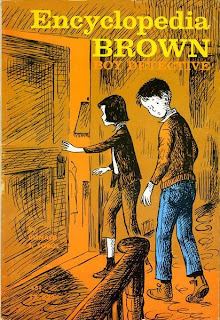 THIS IS THE BOOK I'm now reading. It's an anthology of "Annals of Medicine" articles that Berton Roueche wrote for The New Yorker from the 1940s through the 1980s. (More here on Roueche if you have full-text access to the New England Journal of Medicine.) Roueche was a
THIS IS THE BOOK I'm now reading. It's an anthology of "Annals of Medicine" articles that Berton Roueche wrote for The New Yorker from the 1940s through the 1980s. (More here on Roueche if you have full-text access to the New England Journal of Medicine.) Roueche was a great writer, to be sure, and many of his pieces
are classics. The best known is probably "Eleven Blue Men" (sodium nitrite poisoning in the Bowery; sound familiar?). Another example is "The Liberace Room" (histoplasmosis outbreak among schoolchildren in Arkansas).
So, yeah, great writing and interesting topics.
The rub is that much of the sleuthing that cracks the conundrums reported by Rouehe relies on epidemiologic methods that seem a bit, well, quaint. (Props here to Prof. Art Reingold, who used Roueche's
"The Santa Claus Culture," published in 1971, to illustrate the limitations of old-school epidemiologic methods in his outstanding "Outbreak Investigations" course that I took last year at the University of California at Berkeley's School of Public Health.) Roueche's articles generally feature smart, observant, committed epidemiologists, statisticians, public-health practitioners, and clinicians -- not to mention very astute patients. But the epidemiologic methods that Roueche recounts his subjects using were limited (at best) and do not include many now-standard ones. What about developing a questionnaire? How about a case-control study? A cohort study? That's what you want to ask these folks. (Actually, I have been doing just that. Not audibly, of course. Just very loudly inside my head. But for an introvert like me I figure that is pretty much the same thing.)
 Anyway, the bottom line is that some of the vignettes are more reminiscent of Encyclopedia Brown than MMWR. Consider "A Game of Wild Indians," about an epidemic of typhoid fever in Manhattan. Ultimately, the critical clue emerges from a chance encounter between the investigating epidemiologist and the superintendent of the implicated apartment building. "I walked right into it," the epidemiologist tells Roueche. "It was mostly pure luck."
Anyway, the bottom line is that some of the vignettes are more reminiscent of Encyclopedia Brown than MMWR. Consider "A Game of Wild Indians," about an epidemic of typhoid fever in Manhattan. Ultimately, the critical clue emerges from a chance encounter between the investigating epidemiologist and the superintendent of the implicated apartment building. "I walked right into it," the epidemiologist tells Roueche. "It was mostly pure luck."
But read it anyway. The Encyclopedia Brown books are, in the end, pretty cool too.

 OR AT LEAST she reads my blog.
OR AT LEAST she reads my blog.






































